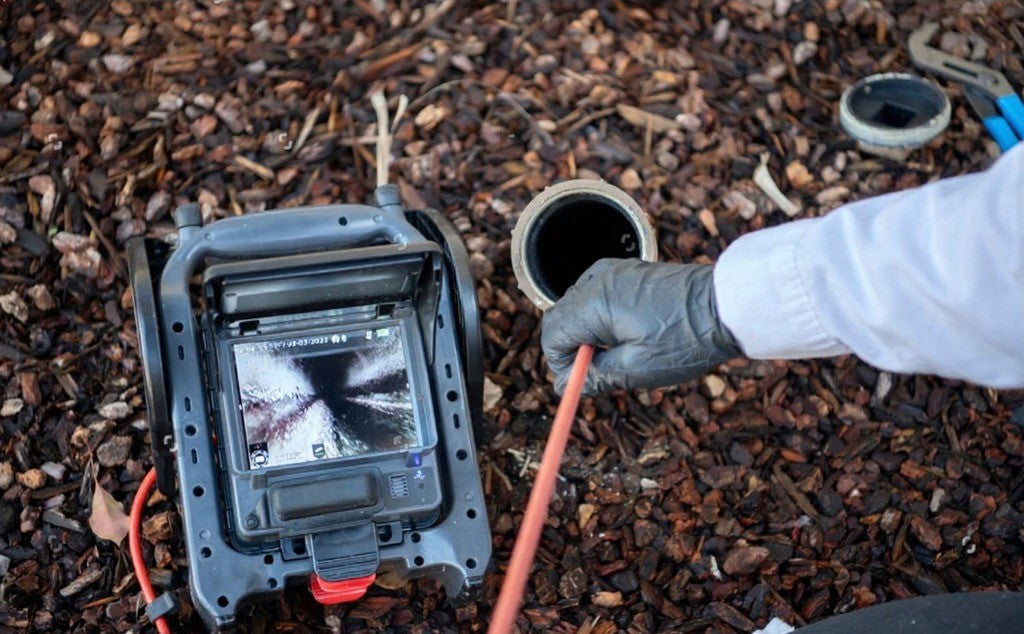
5 Common Mistakes to Avoid When Selecting Pipe Inspection Cameras
Share
Pipe inspection camera is one of the key tools that is used by plumbers and drain cleaners to inspect sewer and drainage systems. Choosing the right inspection camera is essential for plumbers because it helps them to identify leaks and clogs. If the camera for pipe inspection is chosen wrong, it will result in wasted money and inaccurate inspection results. Want to ensure no mistakes while choosing pipe inspection cameras?
In this blog, we are going to explore 5 common mistakes that can be avoided while choosing pipe inspection cameras.
Using pipe inspection cameras, plumbing and maintenance experts have changed the way to solve complicated clogs and issues in the pipes or the sewer lines. Pipe inspection camera, also referred to as a sewer inspection camera, is a long, flexible tube-like cable with a high-definition camera attached to it.
These inspection cameras with light go inside the drain and identify the clog, and show the real-time footage through a live feed that is shown in a connected monitor or screen. Expert plumbers can handle this type of camera effectively, only if they select the right type of pipe inspection camera. Beginners can often make crucial mistakes while choosing the right fixing size. Here, we are going to explore those mistakes that you can avoid while selecting pipe selection cameras.
Mistakes Often Made when Choosing Pipe Inspection Cameras
If you are a plumbing professional, take a look at the points given below to gain awareness:
Mistake 1: Ignoring Pipe Size Compatibility
While choosing sewer pipe video inspection cameras, plumbers often make mistakes by ignoring the pipe size. If you are inspecting a smaller pipe, a larger-sized pipe inspection camera will not be effective in this case.
Why Camera Diameter Matters?
While looking to buy pipe inspection cameras, considering the camera diameter is crucial. Cameras with a smaller diameter can be easily entered through tight spaces and narrow bends of the pipelines. However, a camera with a bigger diameter can provide superior picture quality and fit into wider pipes.
How to Avoid This Issue?
Before you start choosing, the right size of the pipe must be assessed. A thumb rule is to get a camera head with the same size as the pipe’s dimension that is being inspected. Choosing a pipe inspection camera with a longer cable will also effectively enter the pipes. Therefore, it is important to supervise the flexibility of the tubes used to avoid this issue.
Choosing a visual inspection camera system can help you get clear and clarified visuals underneath the pipe and aid you in recognizing the location of potential clogs. These cameras are waterproof. Plus, there are specific cameras that can inspect pipes with a diameter of 300mm.
Mistake 2: Overlooking Camera Quality and Lighting
Another common mistake made by plumbers and sewage cleaners is that they often overlook the camera quality and the light attached to it. Compromising with the camera quality may not properly show the visuals, and can fail to identify the potential clogs.
Poor Camera Resolution Will Lead to Blurry Footage
Buying a sewer inspection camera with poor camera resolution can result in blurry footage and will not show the clogs or leaks properly. Plus, an inspection camera with low resolution can also fail to identify crucial cracks. Instead, opting for a higher resolution camera for visual inspection can result in a clearer image, through which plumbers can get a better understanding of the potential clogs or leakages inside the pipe or sewage line.
Choosing a camera without low-light support will fail to identify the clogs or leakages, as the light sensitivity will be significantly low. It is important to choose drainage inspection cameras that can take clear images even in dark or changing lighting conditions.
How to Avoid This Issue?
It is highly important to choose a high-definition, pipe inspection camera with strong LED arrays. Furthermore, choosing a camera that has a wider viewing angle will help you see a wider view of the pipe or sewer.
In the case of drain inspection cameras, opting for a camera with a shorter focus distance is crucial to improve clarity in the inspection level. Choosing a camera with a shorter focus distance will help in identifying the pipe defects with more detail.
Mistake 3: Neglecting Power Source and Battery Life
Ever imagined unprecedented battery failures during pipe inspection work? Well, this can be the scenario if you show negligence in choosing the right power source or battery life for the inspection cameras.
Types of Battery Packs or Power Sources used in Inspection Cameras
Some camera visual inspection sets can run in AC (Alternating Current), while other cameras can be run by using battery packs. This way, plumbers can install the battery themselves on the job. In most cases, plumbers prefer long-lasting, rechargeable batteries to avoid disruption during field work. Not choosing an ideal battery pack or power source can hamper the work in between.
How to Avoid the Issue?
Before selecting a sewer inspection camera, it is essential to select the specs for the battery and choose a battery that can be recharged faster.
Mistake 4: Not Considering Recording & Reporting Features
While conducting a camera inspection of drains, the plumber can feel the importance of recording the footage appearing in the live feed. However, there are many drainage inspection cameras with no recording option. Selecting one of these cameras is a crucial mistake for an experienced plumber or sewer cleaner.
Importance of Video Recording for Client Reporting
It is important to get a video recorded footage of the live feed captured by the inspection camera, as it can be subsequent proof to satisfy the clients. It will help the client to understand the type of leakage or clog that has occurred.
How to Avoid This Issue?
The best way to avoid this mistake is to use a camera that has a recording and storage capacity. It is ideal to look for a high-lumen display monitor with storage options like USB or an SD card.
Mistake 5: Forgetting Durability and Flexibility
Inside the pipe, there can be multiple pollutants like drainage water, chemicals, rough edges of bends, and rugged surfaces. These harsh environments can damage the flexible cable of the camera used for the inspection of drains.
Damaging Cameras Faster
If you use pipe inspection cameras with fragile cable and a non-waterproof design, it will hamper the longevity of the cameras even faster.
How to Avoid This Issue?
Look for a pipe inspection device that has a good waterproof rating, flexible push cables, and a sturdy housing, which can protect the device from pollutants.
Here is a reference table for you to understand the issues while selecting the pipe inspection cameras and the right solution for them.
|
Mistake |
Why It’s a Problem |
Suggested Solution |
|
Wrong pipe size match |
Won’t fit or too blurry |
Match camera diameter to job type |
|
Low resolution & lighting |
Missed cracks, unclear footage |
HD + strong LED array |
|
Weak battery |
Hampers work midway |
Long-lasting, rechargeable batteries |
|
No recording option |
No client proof, compliance issues |
Built-in recording & reporting |
|
Not considering durability |
Breaks in harsh conditions |
Waterproof, flexible, protective design |
Table: Mistakes While Selecting Pipe Inspection Cameras and Their Solutions
Final Words
Selecting an appropriate drainage examination camera is synonymous with better inspection and fewer disruptions mid-work. This way, you can make your clients satisfied with ideal work output.
Connect with Expert Tool Providers to Get High-quality Pipe Inspection Cameras
Looking for a trustworthy, professional-level drainage inspection camera? Consult with expert tool providers who can provide you with high-quality inspection cameras for drains and sewages.
Frequently Asked Questions (FAQs)
1. Is the Pipe Inspection Camera Submersible?
Ans. Yes, the pipe inspection cameras are submersible.
2. How Often Do I Schedule Sewer Inspection?
Ans. It is important to schedule a sewer inspection at least twice for older pipes. Identifying these piping problems early can help plumbing service providers recognize issues before they can escalate.
3. What Should Be the Image Quality of the Pipe Inspection Cameras?
Ans. Modern pipe inspection cameras are equipped with HD or Full HD sensors, because these images can provide a clearer view even in the dark.
